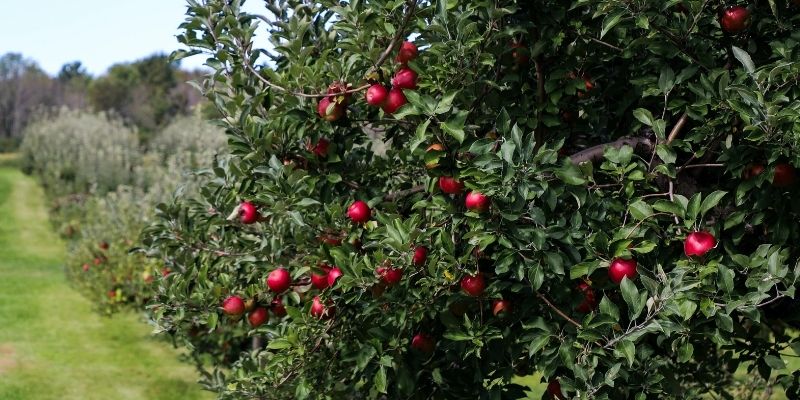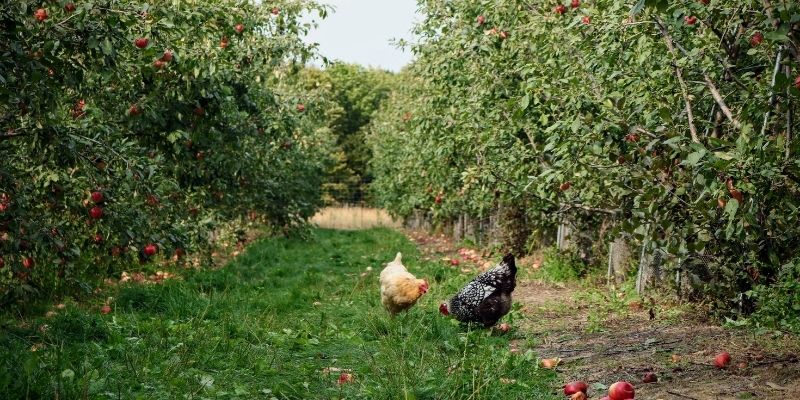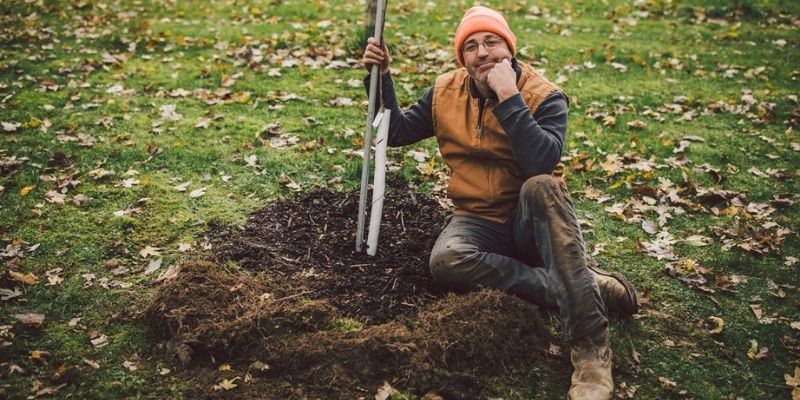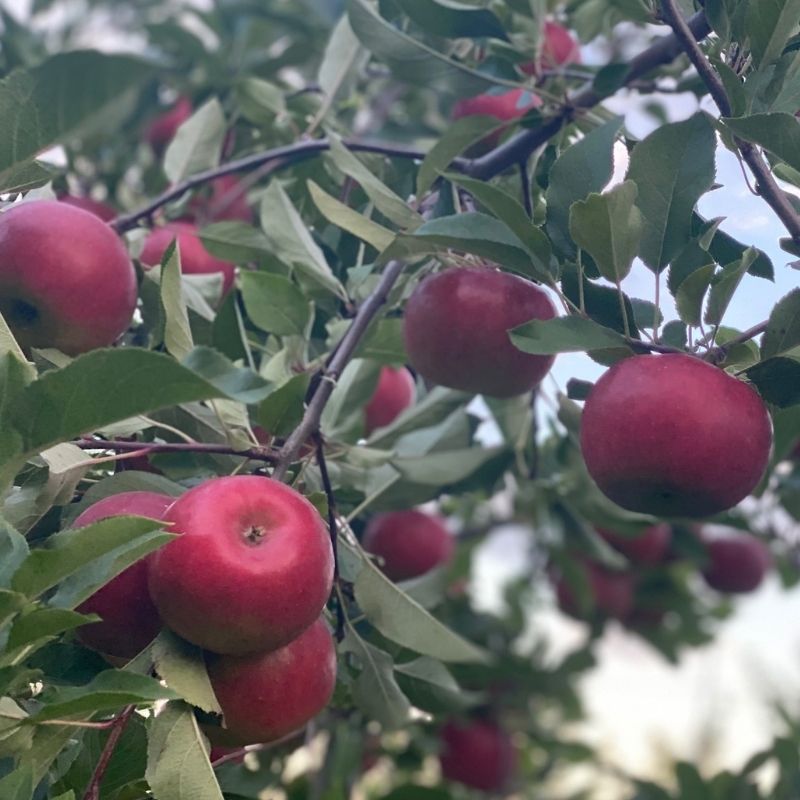by Heron Breen
Friends, as apples ripen and the garden yields an abundance of greens, squash and storage roots, our existing and newly planted trees could use some timely Fall forethought and attention. Each season asks us to act in awareness, and Autumn allows us that perfect “working weather” to prepare ourselves and our trees for the coming Winter.
Water is Life
First, please continue to water your newly planted trees with 1” of water per week (about a 5 gallon bucket full) if Nature is not supplying that amount in rainfall. If we keep this water therapy up until there is a threat of ground freezing, we encourage the tree roots to continue to grow…something that is a favorite pastime of fruit trees come Fall and Winter. The vigor & growth we see above ground next year is predicated on roots roots roots!

Much Ado About Mowing
Second, if not part of our lawn, let’s now mow closely the greater area where our fruit trees are planted. Fall Mowing exposes the existing rodent population to predation, and the lack of good cover discourages rodents from nearby nesting or burrowing in for the Winter. Of course, this helps reduce Winter bark and root damage from hungry mice and voles.
Continued Fall mowing until snow flies also chops up fallen leaves. Overwintered leaves can also overwinter fungal spores that start the infection process all over again the following Spring. Mowing these Fall leaves encourages natural breakdown of the leaf itself, robbing fungus of its free ride, and rewarding our trees with more available nutrients in early Spring.

Pick Up the Drops
Third, picking up any dropped apples from your nearby established fruit trees reduces additional disease inoculum as well as overwintering insects who might be preparing to pupate during the Winter. Leaving the fallen fruit in place also encourages Winter feeding by deer, who invariably will be enticed to eat tender twigs and tops. Don’t tempt them! Whether removed to a far field for wild animals to enjoy, or fed to livestock (pigs, I say!), or pressed for cider, or vinegar apple “drops” are welcome somewhere. And often we have to pick up apples to keep a good mowing thru the Fall (see Second above!).

Trunk Protectors Make All the Difference
Fourth, be preemptive and have plenty of trunk protectors on hand to protect your tree trunks from the rampaging Winter rodents. Even with mowing, we risk everything without a tree guard wrapping the trunk. Hardware cloth works great too! In the Northeast, trunk protection for young trees should extend above the maximum snowpack. In Central Maine, I make sure mine are giving 3’ of protection. Do not be shy if a young branch is growing from the trunk at less than 3’: prune it off now. Such low branches are problematic in so many ways in all 4 seasons. Don’t worry, your tree has lots of future branch growing to do! If that low branch is left, it would hinder the protection of the tree trunk, and it would likely become mice fodder under the snow.
For more about trunk protectors, including instructions for making your own out of hardware cloth, hop on over here.

Oh, Deer!
Fifth, think ahead now about your deer protection plan for the coming Winter. Whether protecting a block of trees all together, or individual trees, we recommend 6 to 8 foot cattle fencing. Install after the mowing and apple drops are removed, but before hard ground freeze. Single trees can have a individual round or square enclosure, 3 to 4 feet in diameter. Please consider quite sturdy wooden or metal posts to stabilize your fencing. Light-duty staking can be overcome by hungry deer.

ps
If growing your own fruit trees sounds intimidating, we agree! We share everything we’re learning on our blog, in our webinar library and in our free online course, Apples & Organic Orcharding. If we can do it, you can, too! We also share live monthly online Q & Qs (always free!) as a community to learn, laugh & grow together. You’ll receive the link to our next Q & Q along with our Apple Growing Guide when you join us below!

Be in the know:
Fruition's Fruit Tree Updates!
You'll receive seasonal tree insights & how-to's plus be the first to know about invitations to tree events on-farm and online!
Visit our newsletter website and subscribe to the 'Tree Updates' section
Enjoy our free online Apples & Organic Orcharding course and Tree Webinar Q&Qs Library in the meantime & don't be shy!
~When you join us, check your inbox for your welcome & access info! Stay tuned for our weekly organic gardening tips & inspiration, as well~
